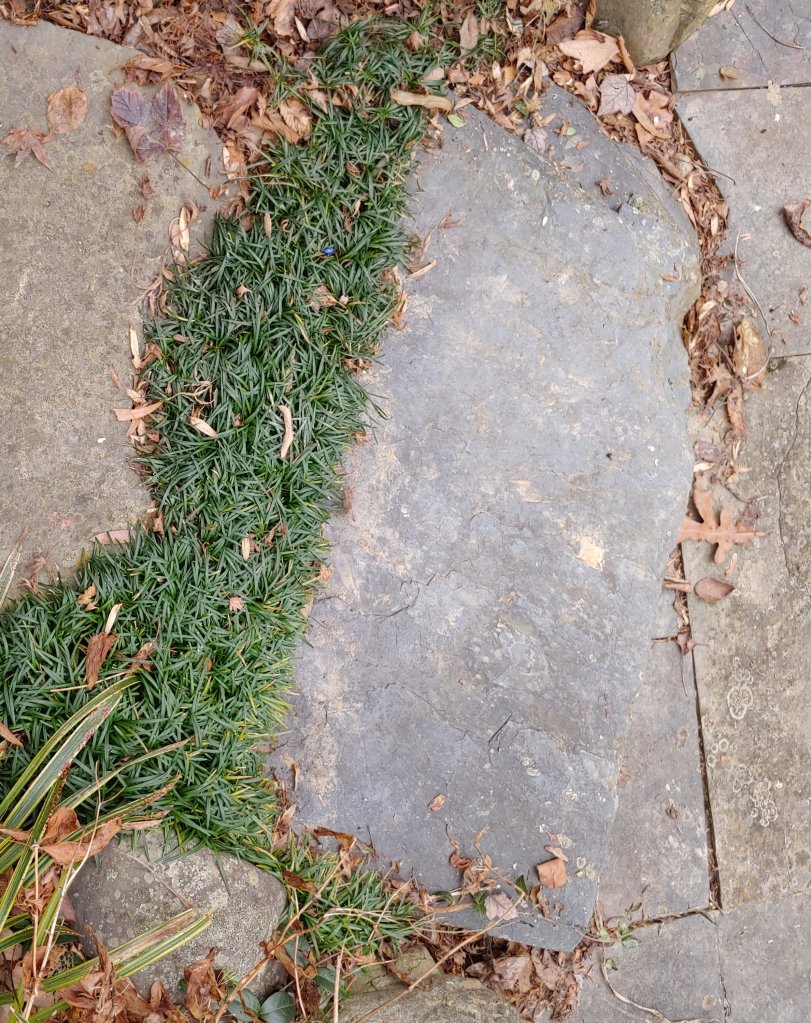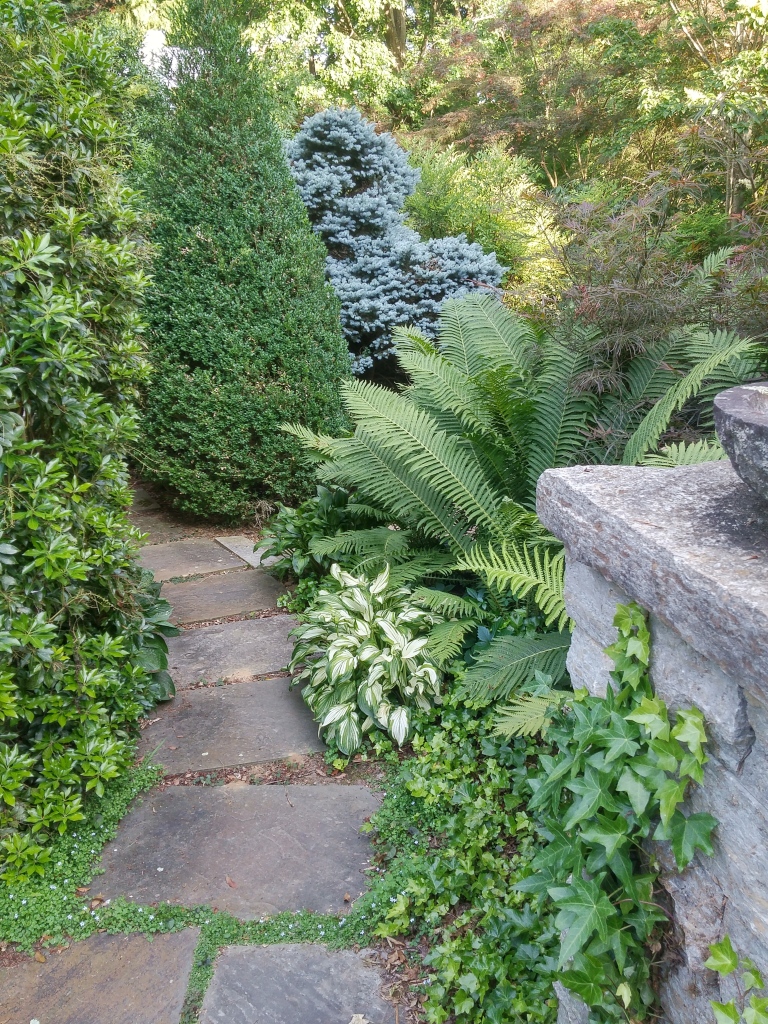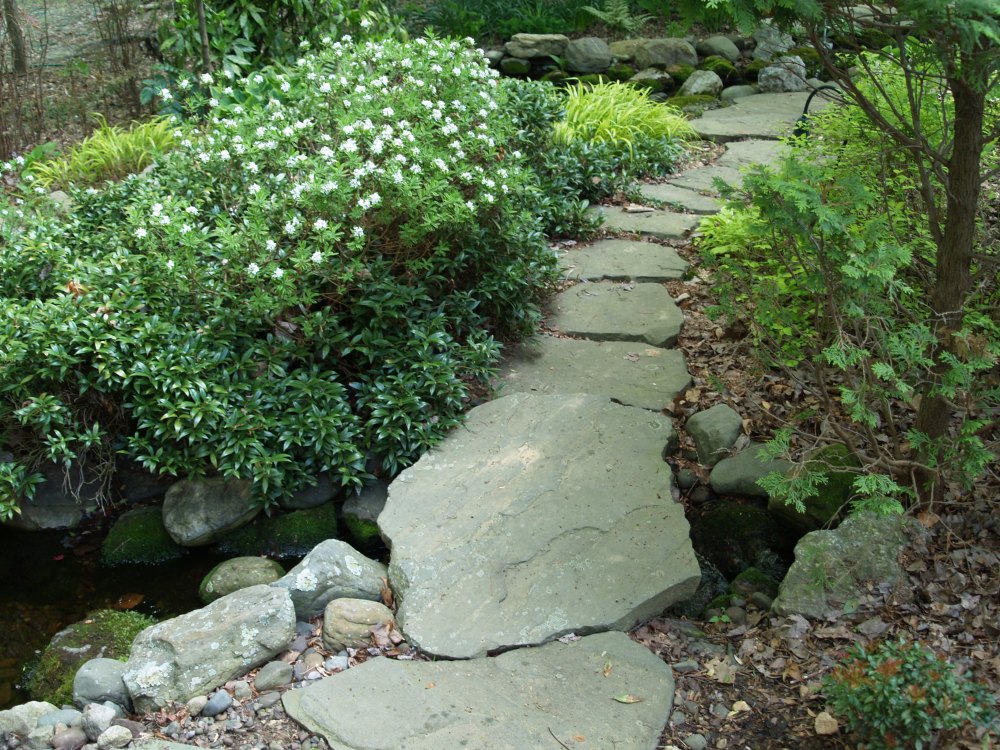There is at least some small benefit to having a second set of eyes (my wife) to observe the garden, if for no other reason than to prevent the gardener (me) from going too far astray. No doubt, I must be reined in on occasion, and it is fortunate that at some point in the past my wife demanded that paths be constructed to wind through the garden.

Early in the garden’s development, when considerable planting was being done, there was little foresight in figuring how planting areas would be accessed. Of course, I was and would be happy to stomp through the mud and debris, and if I wasn’t held to the higher standard, I would drag assorted debris into the house. But, as you expect, this is not acceptable, as I’ve heard so many times.

I was informed that paths were required to pass through all areas not covered by lawn, which after three decades is most of the acre and a quarter property. Considering the expense of doing this, and that I prefer stone, the simplest paths possible were constructed from natural, flat stones. The installation of stone can be time consuming or crudely built, so of course I opted for the quicker, less permanent method that has served the purpose well, even while sections of paths have settled or been buckled by roots.

Several small patios are scattered through the garden, all constructed from natural and cut stone, and in case you wonder, there is no continuity of design, with every patio material differing. If I liked this stone today, that’s what was used for the patio, no matter what anyone might think. Certainly, this lack of cohesion is less than ideal in design, but I think hardly noticeable. The client to be pleased here is me, and I am, even if I sometimes worry about the hazard to visitors of path stones that wobble over top of surface tree roots. Before entering the garden, all are warned to watch their footing.


Is the daphne in your picture still alive? If so, how old is it? And how much sun is it getting?
This daphne was finally overwhelmed by the sweetbox a year ago. This Carol Mackie flourished for a decade or longer with a slight sun exposure. It’s hard to believe that the very slow growing sweetbox could be claimed to be aggressive, but after years it regularly must be removed as it pops up between stones in the path. The daphne’s decline coincided with the time when the sweetbox became a dense mass.
Unfortunately, a second daphne (Jim’s Pride) that thrived in the front planting died last year, going from healthy and blooming to dead in a few days without any indication why. The answer, I’m afraid, is that’s daphne, with no further reason necessary.
I wonder if flagstone and such gives moles and voles little shelters.
Years ago we had dogs that sniffed and dug out our one time incidence of moles. I’ve seen no sign of them since, but I assume they’re digging in search of food that they will not find inches into the soil beneath stone paths.
That fern by the driveway is amazing! What is it called?
Lovely stonework. Almost as beautiful as the plants you post each month
The tall fern is Ostrich fern, one that must be planted with care since it is quite vigorous. In this spot it is bordered by a path and a patio on the back side, but rhizomes often creep between stones in the path. These are easily removed, but without any attention Ostrich fern will grow far and wide. Curiously, I find that Ostrich fern is one of the main attractors of Japanese beetles in the garden. While ferns are typically not bothered by any pests, this is the exception.
I have ostrich ferns in my garden in Maine. Do they just grownlarger in VA or are there special giant ones available? Thanks Dave you are an inspiration.
The vigor of Ostrich ferns varies, with tallest growth in part sun and deep soil and shorter in dry ground with root competition. Growth is so rapid that I doubt the more northern climate and shorter season are the cause.
Thanks, Dave. The fiddle heads are delicious from the grocery store up there. I don’t harvest my own, which grow in a whiskey barrel on the shady side of the house in Maine. I’d rather buy the nice, big baggies of clean, trimmed fiddle heads which are sold for a month in spring. Boil them and add butter.
I have over 3 acres that requires major landscaping and now retired I can start on it. I live in Southern Maryland. Do you travel this far to help a fellow gardener out? If not where should I begin.
Designers travel as far south as Leonardtown. If you are interested please respond through Meadows Farms’ website.